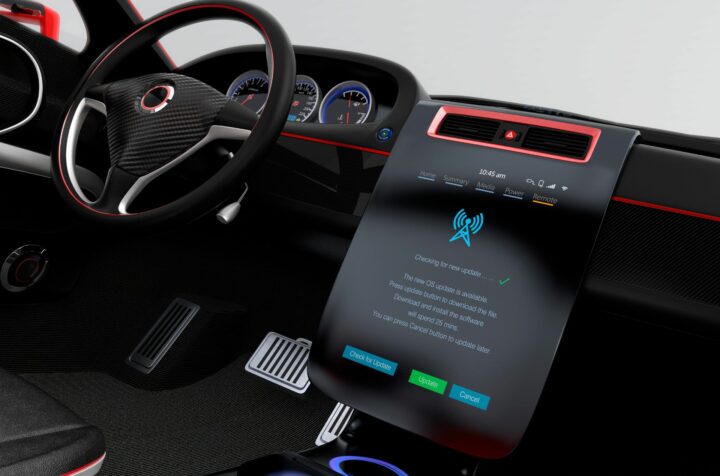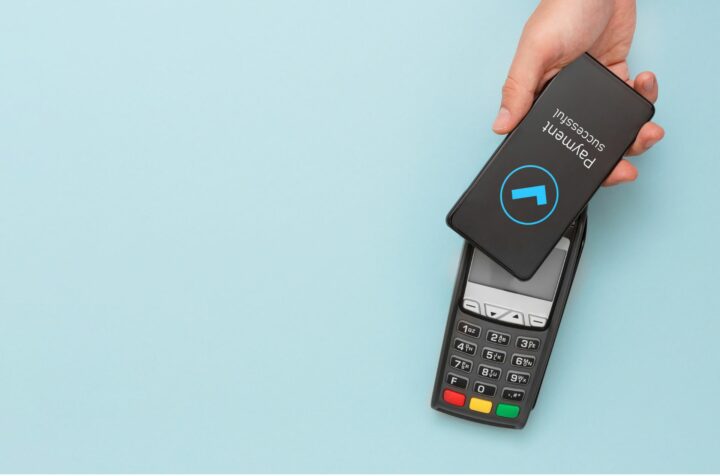The evolution of telematics in the insurance industry is part of a radical change that is currently taking place. Telematics are more than just insurance with an integrated black box.
Let’s start with a question.
Would a Transformer (you know them, they’re robots that can transform into cars) buy life insurance? Or would they buy car insurance?
They’re millions of years old so that’d mean paying a huge life insurance premium but then, they’re tough. So, there’s no significant risk there, right? They’ve lived a long, long time. Yet, they can transform into newer cars, they don’t need other drivers, or replace valuable auto parts, and…
Well, you get the picture. What policy do you think would be best? How could you best work it out?
But keep in mind. As robots they can collect, record, and share everything that happens to them, every second of the day. Imagine, as an insurer, what it’d be like to have access to that information! You’d be able to see if they spend every day in dangerous situations, risking their lives. Or whether they drive carefully or recklessly.
Now think of how people and technology are becoming ever more interconnected. There’s increasingly less difference between those fictional robots, where all the data they collect and generate is open to review, and us.
Reality is about to transform
In 2013, British actor and comedian Rowan Atkinson set a record that was no joke. Especially to insurers. After his rare McLaren F1 hit some water, spun off the road, and crashed into a tree in 2011, his insurer paid close to $1.2 million for the repairs.
Let’s not even factor in the day-to-day costs when processing the claim! But in the end, they did what the insurance industry has always done: Protect against economic loss. Ever since America’s first insurance company was organized in 1752, this role hasn’t changed much.
But… as Dylan sang… the times, they are a-changin’.
Today, innovative technology is helping organizations like yours transform their core operations. From streamlining your offerings to promoting growth (for both differentiation and profitability), boosting customer engagement, developing new offerings, employing automation tools, generating better analytics, and boosting data security.
To name a few.
Modern technology is helping the insurance industry evolve from product-driven to customer-centric – from ‘reactive’ to ‘proactive’. An important move as public trust is a growing concern for insurance CEOs around the world.
This is especially true for younger, more digital-savvy customers.
They need to know; as their data goes into ‘the cloud’ and is shared between different agencies; that you’re doing your best to keep it safe. They also want tailor-made solutions that give varying levels of control for their coverage (another level of trust).
It’s this technology that’s set to enable you to place your customers front and center. That you understand their concerns. That you’ll be there when they need you. That you’ll be there to help them as they journey with you.
That’s why you need to ask them what they want and need and not develop products you think are great. Go out there and find out what your target group wants – don’t tell them what they need from your point of view.
And this is the revolution. Technology, data, and knowledge are set to transform your business. From a provider of those ‘reactive’ solutions to a lifestyle company that offers ongoing risk management services. The future is about helping mitigate loss by keeping your customers healthy and safe.
Which brings us back to that $1.2 million payout.
While an uncommon amount to pay for a single car’s repair, it raises a bigger discussion. If you were in their position, what could have been done to reduce your costs while keeping your client happy?
This is where telematics devices are set to be a true game-changer.
Telematics: More than a black box
“As a general rule, the most successful man in life is the man who has the best information.”
– Benjamin Disraeli
For car’s alone, telematics devices can collect extremely detailed information:
GPS data, fuel economy, battery health, how your customer drives the car (too fast, braking too hard). Engine diagnostics, where they drive and how far, traffic conditions, who’s driving the car, and much more.
Such real-world data helps you customize policies and dictate premiums. While your customers gain information (based on their actual driving habits) to select policies that match their needs.
The better they drive, the more they’re rewarded, and the less payout. Decisions that are all based on hard data, collected in real-time.
But telematics devices aren’t only about cars anymore. They’re about lifestyle-information gathering. And with 70% of US car insurers already using telematics in 2020, the market is ripe for diversity.
Today, more and more products seamlessly connect to the Internet (the Internet of Things). Phones, watches, automatic pet feeders, TVs, thermostats, and even fridges. All making data easier to share, collate, and analyze. You can then use that data to guide the development of your innovative solutions.
This is already happening. Beam Dental’s toothbrushes can tell how often and how long a customer brushes their teeth. John Hancock’s Vitality solution tracks a user’s lifestyle habits through their mobile app.
What can your organization offer?
An ounce of prevention is better than a pound of cure
This is where telematics devices are set to bring you and your customers closer than ever before. And where you’re an active participant.
Today’s telematics devices provide data to help you determine policies and claims. Tomorrow’s will enable you to give direct feedback and suggestions. If sensors show there’s potential for hydroplaning when a customer is driving their McLaren F1 supercar, they can receive a warning. Then, if sensors show they didn’t slow down or were hitting the corners too fast, it may affect their claim.
If a business customer is insured for theft or burglary, such devices can send alerts when gates aren’t locked, or exterior lighting turns on. At the very least, as their insurer, you’ll get an alert that their business isn’t secure. As with water and freezing damage. Sensors can alert them, and you, to temperature fluctuations, i.e., when to clear snow or turn the water off. And whether it was done or not.
This leads to either a reward or a potential penalty.
If your toothbrush shows a customer always brushes their teeth, offer them a lowered premium.
When their Fitbit’s data shows they’re rarely active, remind them that with a healthier lifestyle they can save 20% on their next renewal. If not, they’ll pay the same rate next year.
And this means taking a far more active role in the behavior of your customers. You can develop more flexible policies that change depending on their monitored usage and risk. Or create tailor-made experiences that require less policy (application) questions, which will be asked by AI/chatbots. As you settle claims in seconds via your app.
Artificial Intelligence
At its pure essence, artificial intelligence (AI) is a set of technological tools that we use to automate (often basic) tasks – accurately and quickly – without getting tired or being paid overtime. AI is highly effective in streamlining operations and analyzing customers to predict their behavior and preferences. It can then, via chatbots, deliver tailored offerings.
It will also be useful for telematics devices when analyzing the data to figure out accurate premiums.
For an interesting look at how to use AI, check out Deloitte’s White Paper: From mystery to mastery: Unlocking the business value of Artificial Intelligence in the insurance industry.
It may also mean that you’ll (need to/want to) form new partnerships to help develop devices for specific industries and customer needs.
“In the decade ahead, insurers are likely to increasingly experiment with platform and alliance plays — teaming up with auto manufacturers, for example, to offer coverage on newly purchased vehicles, as well as with smart home and commercial property builders to tie coverage terms and conditions to real-time, sensor-driven data.”
– Deloitte 2020 insurance industry outlook
Data – the driver behind telematics
The data collected by a telematics device is extremely important – and is increasingly vital in managing claims, deciding how policies are serviced and priced, and when developing targeted sales and marketing. It can also play a key role in building up a complete customer overview; particularly because you can directly check their behavior. This will only become deeper and more comprehensive as telematics devices expand beyond cars.
Additionally, when connecting telematics data to a customer’s existing data, you can better assess their risk (price for it). And better develop products and services that have more meaning and relevance to them. Not only on a one-to-one basis but by predicting the overall behavioral patterns of everyone that uses the same device.
If you still calculate insurance premiums from self-reported information, then claims can be a lot of ‘he said, she said’. Verifying and validating such data can be labor-intensive and costly.
But with data collected from telematics devices, you can draw a real-world picture of an accident or negative lifestyle behavior. If customers claim they’re careful drivers, yet telematics data shows they aren’t, then you can challenge their claim, raise their premium, etc.
Telematics data doesn’t, however, show the full picture. Not using your connected toothbrush every day doesn’t mean you aren’t brushing your teeth. But you’ll at least have the data to tell me they need to use the brush as part of their policy.
Of course, when we’re talking data… we need to discuss trust.
Before introducing telematics, you need to build trust
For your customers, this massive collection of data naturally raises privacy and confidentiality issues. There’s no doubt that not everyone is comfortable sharing their daily habits with a third party. Whether that’s driving or exercising. Especially when they’re using new and unfamiliar technology.
This is more so when looking at recent failures concerning corporate data loss. Customers want assurances that you are protecting their data. And with 75% of Americans saying there should be new regulations for what a company can do with personal data, and 81% believing that the risks of data collection far outweigh any benefits, it’s clear that building trust must be a high priority for any insurer. Especially when it comes to the amounts of data a telematics device can collect.
Going forward, you’ll need to:
- Reassure your customers about data protection
- Be highly transparent with your data-usage policies, and
- Be up-to-date with data protection laws (particularly where data is not anonymized).
And, it’s important to provide the right incentive. For the right discount, people might be more willing to share their private information than for just a few Cents.
Insurtech
Mostly known for disrupting traditional insurance models, insurtech uses innovative technology (such as chatbots) to improve service, cut costs, and streamline operations. It can also be a valuable tool when managing complex data – such as that collected via telematics.
For a quick view of insurtech trends throughout 2019 and 2020, see KPMG’s report: Insurtech 10: Trends for 2019.
A truly connected world
We are now connected in ways that a generation ago would’ve been unimaginable.
Today, you can use your cellphone to check if you’ve forgotten to lock the car and then lock it from miles away. When a cold snap comes through you can contact your house and turn on the heating. You can check your dog’s temperature with a GPS-enabled chip inserted under her skin.
Data that you, as their insurer, can now receive… as it happens.
Such connectivity isn’t just about your being told that something has gone wrong and preparing for a claim. It allows you to proactively limit, if not stop, the damage from incidents and unhealthy behavior. Hey customer, lock your car. Keep the water pipes from freezing. Ensure your pet is healthy. Walk more. Not while they’re first signing a policy but every single day that they’re on it.
That’s a win-win for everyone. Especially insurers that want to keep healthy, careful, and considerate customers for the long term.
This is the future of insurance. Interconnected partnerships where ‘good’ behavior is rewarded.
That’s why telematics devices are going to be so truly transformative for the insurance industry.
And why you need to look at innovative ways to use them.
These articles could also be interesting for you:The Use of Big Data in Business Make Research Data Insightful








